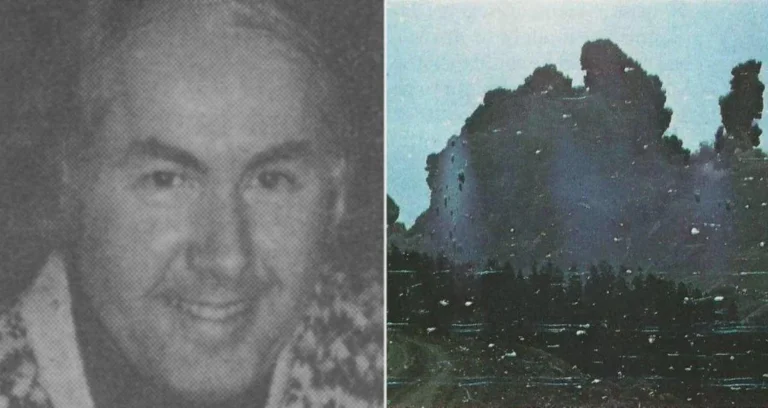On a sweltering December morning in 1938, a young museum curator in South Africa tugged a blue-flecked giant from a pile of fish and changed the story of life on Earth. The creature she rescued was supposed to be extinct. Instead, the coelacanth blinked back at history.
Marjorie Courtenay-Latimer did not yet know the name of the ancient fish she had salvaged from a dockside catch. She only knew it mattered, and her persistence would pull a lineage from prehistory into the modern world.
The day a fossil blinked
Courtenay-Latimer, then curator at the East London Museum, spotted the unusual specimen among a trawler’s haul on December 22, 1938. Nearly five feet long and weighing about 127 pounds, the fish bristled with armored scales and limb-like fins. She persuaded a taxi driver to ferry it to the museum, where she began a frantic bid to keep it intact for a proper study.
The local morgue refused to store it, so she had the fish preserved by a taxidermist, sacrificing the organs she could not keep cool in the summer heat. She sketched what she saw, took measurements, and sent letters to the one person she believed might understand the find: the Rhodes University ichthyologist J.L.B. Smith.
“much worry and sleepless nights,” wrote J.L.B. Smith to Courtenay-Latimer in a January 1939 letter, as recounted by Peter Tyson for Nova PBS. He was desperate to see the specimen with his own eyes.
When Smith finally arrived, he had little doubt. Here was a coelacanth, a fish known from fossils but believed to have vanished with the dinosaurs. In 1939, he formally named the species Latimeria chalumnae, honoring the curator who had saved it and the nearby Chalumna River.
The fish that never went away
Science had declared the coelacanth extinct. People who lived with the sea had not. In the Comoros, fishers knew the animal as gombessa, an occasional bycatch from steep volcanic slopes. Smith’s quest for a second specimen led to a dramatic 1952 confirmation from the islands, cementing the fish’s unlikely return to the scientific record.
Coelacanths belong to the lobe-finned lineage that also gave rise to the first four-limbed vertebrates. Their fleshy, paired fins articulate from bony lobes and move in a slow, almost metronomic pattern, a reminder that the boundary between fin and limb is a spectrum over time. In evolutionary terms, they are closer to us than they are to familiar ray-finned fish like tuna or trout.
The coelacanth’s features are a catalog of curiosities. A hinged skull roof known as the intracranial joint helps it widen its gape. A rostral organ in the snout senses electrical signals in the dark. Thick, pebbled scales armor a body built for a low-energy life along submarine cliffs. They are living symbols of continuity, but not unchanged. Like every lineage that survives, coelacanths have evolved.
A second species and a deeper picture
For decades, Latimeria chalumnae from the western Indian Ocean stood alone. Then, in 1997, an unexpected second act: an Indonesian coelacanth caught off North Sulawesi pointed to a new species, later described as Latimeria menadoensis. Suddenly, the map of their hidden range expanded from the Comoros, Madagascar, and the African coast to the islands of Indonesia.
The discovery underscored a humbling fact. The deep sea can hide survivors in plain sight, especially when they live hundreds of meters down and rise toward shallower water only at night. What we think we know about extinction and survival often reflects the limits of our vision more than the boundaries of nature.
A twenty-first century comeback on camera
In recent years, that vision has sharpened. Japanese filmmakers and scientists have worked to capture coelacanths on their own terms, in their own habitat. In 2025, NHK announced that the BBC and Taiwan’s PTS acquired Deep Ocean: Kingdom of the Coelacanth, a documentary co-produced with ZDF/ARTE and OceanX that succeeded in an unprecedented 72-hour continuous observation off Sulawesi, filmed in 8K.
“I have a special affection for the species. A live ten-minute programme about the discovery of a living one in South Africa back in the nineteen fifties, was in fact the first programme I ever actually directed. So I count it a real privilege to be invited to speak the English words of the first film to do the job,” said David Attenborough, who narrates the English version.
The project brought together deep-submergence technology and scientific expertise, with coelacanth specialists Dr. Masamitsu Iwata and Dr. Kelly Sink advising at sea. The team’s long-duration observations captured the first clear images of a group of coelacanths and behavior indicative of reproduction. For a species cloaked in darkness, it was a rare reveal, and a reminder that patience is sometimes the most powerful tool in science.
From museum shelves to frozen clarity
The coelacanth’s journey from rumor to reality has relied on places where the public can see, study, and be surprised by it. In Japan, the Numazu Deep Sea Aquarium maintains two frozen coelacanths in a room chilled to minus 20 degrees Celsius, alongside three taxidermy specimens. The frozen display lets visitors examine details of scales, fins, and eyes with unusual clarity, a stark contrast to the rough outlines preserved by traditional mounts.
For many, that first face-to-face encounter delivers the same jolt Courtenay-Latimer felt in 1938. The fish’s armored head, the slow, paired rhythm of its fins in archival footage, and the sense that you are looking at time itself make it hard to tear your gaze away.
Why this fish still matters
The coelacanth’s resurrection reshaped how scientists and the public talk about the past. It is a case study in the limits of inference and the power of evidence. It also shows how discovery can be collaborative across cultures. Local fishers knew the animal long before researchers named it, and their knowledge helped guide science toward the truth.
As climate change, deep-sea mining prospects, and bycatch pressures creep into the coelacanth’s world, its survival is not guaranteed. The species is legally protected across much of its range, yet protection in the deep sea is only as strong as enforcement and understanding. Every new observation of how coelacanths feed, migrate, and breed gives conservationists something concrete to defend.
There is also the matter of language. The label living fossil evokes stasis, but the story brims with change. Coelacanths evolved a strategy for endurance that is neither primitive nor simple. Slow growth, late maturity, and a nocturnal life along steep submarine slopes are modern solutions to an ancient problem: how to persist when the surface world churns.
And then there is the human story. A museum curator who trusted her instincts. An ichthyologist who could not sleep for wonder. Engineers and filmmakers who pushed cameras into the black to watch a lineage breathe. Each step pulled a little more light into the deep.






